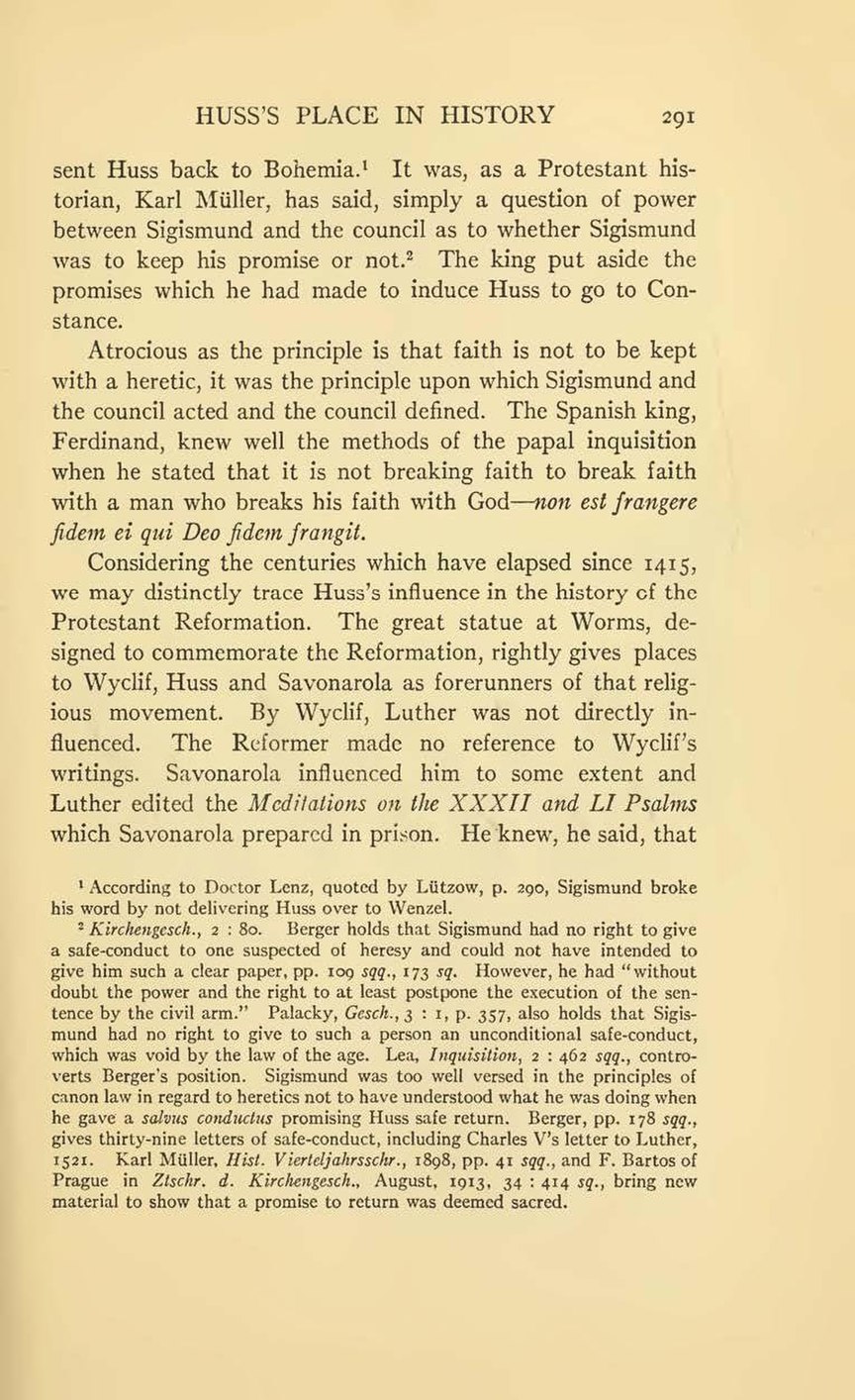sent Huss back to Bohemia.[1] It was, as a Protestant historian, Karl Müller, has said, simply a question of power between Sigismund and the council as to whether Sigismund was to keep his promise or not.[2] The king put aside the promises which he had made to induce Huss to go to Constance.
Atrocious as the principle is that faith is not to be kept with a heretic, it was the principle upon which Sigismund and the council acted and the council defined. The Spanish king, Ferdinand, knew well the methods of the papal inquisition when he stated that it is not breaking faith to break faith with a man who breaks his faith with God—non est frangere fidem ei qui Deo fidem frangit.
Considering the centuries which have elapsed since 1415, we may distinctly trace Huss’s influence in the history of the Protestant Reformation. The great statue at Worms, designed to commemorate the Reformation, rightly gives places to Wyclif, Huss and Savonarola as forerunners of that religious movement. By Wyclif, Luther was not directly influenced. The Reformer made no reference to Wyclif’s writings. Savonarola influenced him to some extent and Luther edited the Meditations on the XXXII and LI Psalms which Savonarola prepared in prison. He knew, he said, that
- ↑ According to Doctor Lenz, quoted by Lützow, p. 290, Sigismund broke his word by not delivering Huss over to Wenzel.
- ↑ Kirchengesch., 2: 80. Berger holds that Sigismund had no right to give a safe-conduct to one suspected of heresy and could not have intended to give him such a clear paper, pp. 109 sqq., 173 sq. However, he had “without doubt the power and the right to at least postpone the execution of the sentence by the civil arm.” Palacky. Gesch., 3: 1, p. 357, also holds that Sigismund had no right to give to such a person an unconditional safe-conduct, which was void by the law of the age. Lea, Inquisition, 2: 462 sqq., controverts Berger’s position. Sigismund was too well versed in the principles of canon law in regard to heretics not to have understood what he was doing when he gave a salvus conductus promising Huss safe return. Berger, pp. 178 sqq., gives thirty-nine letters of safe-conduct, including Charles V’s letter to Luther, 1521. Karl Müller, Hist. Vierteljahrsschr., 1898, pp. 41 sqq., and F. Bartos of Prague in Ztschr. d. Kirchengesch., August, 1913, 34: 414 sq., bring new material to show that a promise to return was deemed sacred.
